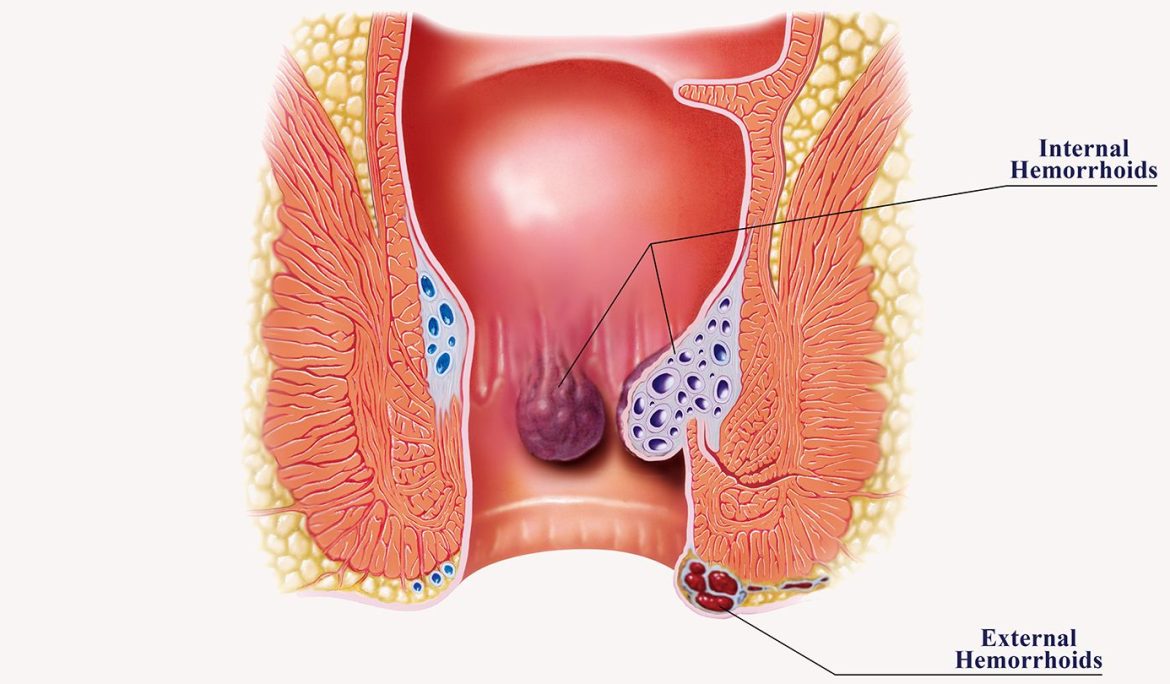Introduction: Hemorrhoids, though common, often remain shrouded in silence due to embarrassment and discomfort. However, addressing this prevalent condition is crucial for promoting well-being and offering relief. In this comprehensive guide, we delve into the causes, symptoms, and effective management strategies for hemorrhoids, empowering individuals to take control of their health and find comfort.
Understanding Hemorrhoids: Hemorrhoids, also known as piles, are swollen veins in the rectum and anus. They can occur internally, within the rectum, or externally, around the anal opening. These swollen veins can result from various factors, including increased pressure on the rectal area, such as straining during bowel movements, chronic constipation or diarrhea, obesity, pregnancy, and a sedentary lifestyle.
Types of Hemorrhoids: There are two main types of hemorrhoids: internal and external.
- Internal Hemorrhoids:
- Located inside the rectum, internal hemorrhoids may not cause noticeable symptoms initially.
- Symptoms may include painless rectal bleeding, protrusion or prolapse during bowel movements, and discomfort or irritation.
- Internal hemorrhoids are graded based on their severity, ranging from grade I (mild) to grade IV (severe).
- External Hemorrhoids:
- External hemorrhoids develop under the skin around the anus.
- They can cause symptoms such as itching, pain, swelling, and discomfort.
- Thrombosed external hemorrhoids occur when blood clots form within the swollen veins, leading to severe pain and swelling.
Symptoms of Hemorrhoids: Recognizing the symptoms of hemorrhoids is essential for timely intervention and management. Common signs and symptoms include:
- Rectal bleeding, often noticed as bright red blood on toilet paper or in the toilet bowl.
- Itching, irritation, or discomfort around the anal area.
- Pain or discomfort during bowel movements.
- Swelling or a lump near the anus.
- Prolapse or protrusion of internal hemorrhoids during bowel movements.
Diagnosis of Hemorrhoids: Diagnosing hemorrhoids typically involves a thorough medical history, physical examination, and possibly additional tests. During the examination, healthcare providers may visually inspect the anal area, palpate for swelling or lumps, and inquire about symptoms. In some cases, additional tests such as anoscopy, sigmoidoscopy, or colonoscopy may be recommended to evaluate the extent of the condition or rule out other underlying gastrointestinal issues.
Treatment and Management Strategies: The management of hemorrhoids focuses on relieving symptoms, reducing inflammation, and preventing recurrence. Treatment options may vary depending on the severity of the condition and individual preferences. Effective management strategies include:
- Lifestyle Modifications:
- Consuming a high-fiber diet to promote regular bowel movements and prevent constipation.
- Staying hydrated by drinking an adequate amount of water daily.
- Engaging in regular physical activity to improve bowel function and circulation.
- Avoiding prolonged sitting or straining during bowel movements.
- Topical Treatments:
- Over-the-counter creams, ointments, or suppositories containing ingredients such as hydrocortisone, witch hazel, or lidocaine can help alleviate symptoms like itching, pain, and swelling.
- Topical treatments should be used according to the instructions provided and under the guidance of a healthcare professional.
- Sitz Baths:
- Soaking the anal area in warm water, known as a sitz bath, can provide relief from discomfort and promote healing.
- Sitz baths can be performed several times a day for 10 to 15 minutes each session.
- Oral Medications:
- Oral pain relievers such as acetaminophen or nonsteroidal anti-inflammatory drugs (NSAIDs) may help alleviate pain associated with hemorrhoids.
- Stool softeners or fiber supplements may be recommended to prevent constipation and reduce strain during bowel movements.
- Procedures and Surgical Interventions:
- In cases where conservative measures fail to provide relief or for severe hemorrhoids, medical procedures or surgical interventions may be considered.
- Procedures such as rubber band ligation, sclerotherapy, infrared coagulation, or hemorrhoidectomy may be performed to shrink or remove hemorrhoids.
Prevention: While hemorrhoids can be recurrent, adopting healthy habits and preventive measures can reduce the risk of developing or exacerbating the condition. Key preventive strategies include:
- Maintaining a balanced diet rich in fiber to promote regular bowel movements and prevent constipation.
- Staying physically active to improve overall health and bowel function.
- Avoiding prolonged sitting or standing, which can increase pressure on the rectal area.
- Practicing proper hygiene, including gentle cleansing of the anal area after bowel movements.
- Managing underlying conditions such as obesity or chronic constipation through lifestyle modifications and medical interventions.
Conclusion: Hemorrhoids are a common yet often misunderstood condition that can significantly impact an individual’s quality of life. By understanding the causes, symptoms, and effective management strategies outlined in this guide, individuals can take proactive steps to alleviate discomfort, promote healing, and prevent recurrence. It’s essential to seek medical advice for proper diagnosis and personalized treatment recommendations. Remember, you’re not alone in dealing with hemorrhoids, and with the right approach, relief and comfort are attainable goals.













